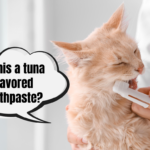Fear of toxoplasmosis can take discourage from having a cat. Is there really anything to be afraid of? And does demonizing furries in the transmission of this disease make sense when an inadequately washed lettuce brought straight from the market can become a similar threat? Today, we decided to deal with this controversial topic, because, we think, it still requires education, especially because there is a person in myKotty team, who had this disease and luckily dealt with it.
Toxoplasmosis can be a serious illness, but only if we expose ourselves to the possibility of infection. A few simple remedial actions are enough to avoid this common, parasitic disease that occurs worldwide. Many of us have positive antibodies in our blood that indicate toxoplasmosis, which means that we have gone through the disease without any symptoms. If we have strong immunity, we have nothing to fear. The danger arises when there’s a possibility of infection of the child during pregnancy, as well as when the acquisition of toxoplasmosis coincides with other diseases, when our immunity is lower.
Cause of the disease
The main source of toxoplasmosis is an infection with the Toxoplasma gondii parasite, whose ultimate host is felidae. The risk of infection is increased, among others, by contact with cats, their faeces, as well as food contaminated with cat excreta, although there may be more reasons (e.g. eating raw meat or unpasteurized milk). Parasites multiply in the intestines of cats (exactly in the epithelium), and then are excreted in the feces in the form of so-called oocysts that are contagious to animals, birds and humans. After ingestion, the parasite multiplies inside the cells of the host’s organs and tissues, locating itself in the muscles, central nervous system, and even in the eye.
How can infection occur?
This is probably the most important issue in this article, because it refutes some myths associated with toxoplasmosis and allows you to better understand in what situations the risk of acquiring this disease increases. Contrary to popular belief, it’s difficult to catch toxoplasmosis simply by stroking a cat (although in this case better be careful – especially during the pregnancy).
Infection can occur through:
❎ ingestion of oocysts after contact with cat faeces (e.g. when cleaning the litter box or while playing in the sandbox) – hence washing your hands after such activities is highly recommended
❎ ingestion of oocysts directly from unwashed vegetables or fruits that are contaminated with feces or have been transferred to food by flies or cockroaches
❎ ingestion of oocysts in raw or semi-raw meat (pigs, sheep or poultry may also become infected with the parasite)
❎ ingestion of oocysts in unpasteurized milk or dairy products
In addition to the scenarios discussed above, there are two other specific situations:
❎ fetal infection by passing parasites through the placenta (during pregnancy)
❎ infection following an organ transplant
Symptoms of the disease
As you can see, the disease can be acquired directly (a person consuming oocysts) and as a result of infection by the mother (during pregnancy), hence the division into acquired toxoplasmosis and congenital toxoplasmosis. While in the majority of cases, the disease in the acquired variant is asymptomatic, there are exceptions with health implications.
These include symptoms such as:
– enlarged lymph nodes and flu-like symptoms
– inflammation of the retina and choroid of the eye
– in people with lower immunity – serious symptoms in the form of inflammation of the heart, lungs, liver and even meningitis
The situation is different with congenital toxoplasmosis, which affects newborns, and infection occurs in the prenatal period (during pregnancy), while only in the so-called primary infection, i.e. if a woman hasn’t previously had toxoplasmosis. The biggest threat to the fetus is infection with the parasite in the 3rd trimester of pregnancy, however, the later the mother becomes infected, the less likely the baby will develop severe symptoms. In Poland, toxoplasmosis occurs in 1 in 1000 newborns. Fortunately, the classic symptoms of congenital toxoplasmosis occur in less than 30% of infected children. As you can see, this percentage is low, but the acute version of the disease in these cases can be dangerous, because it carries the risk of the simultaneous occurrence of 3 symptoms (the so-called Sabina-Pinkerton triad) – hydrocephalus, intracranial calcification and inflammation of the retina and choroid. Concomitant symptoms may also include convulsions, an enlarged liver, and low body weight right after birth.
Tests
Toxoplasmosis can be diagnosed by performing laboratory tests for the presence of blood antibodies (IgM, IgA, IgG) or the presence of a parasite based on genetic material (PCR) in the blood. The correct interpretation of tests is very important in the diagnosis of toxoplasmosis in pregnant women, as this translates into the risk of fetal infection and rapid treatment during pregnancy. Before the pregnancy is planned, it’s good to perform tests to verify the serological status (presence or absence of specific antibodies).
Effective treatment
People with normal immunity don’t actually require treatment. Suffering from an ocular or generalized form (attacking internal organs), treatment is carried out in specialized centers and therapy with antiprotozoal drugs is used. For pregnant women, treatment with spiromycin, which prevents the parasite from entering the placenta into the fetal blood (therapy is used until the end of pregnancy), helps. After the disease is diagnosed and appropriate measures are taken, regular morphology will also be necessary (prescribed medications may lead to thrombocytopenia and low white blood cell counts). If visual impairment occurs, fundus examination may also be indicated.
How to defend against infection?
The key is hygiene and compliance with the principles of healthy and safe nutrition, among which the most important are:
☑ avoiding eating raw, semi-raw and smoked meat and sausages as well as unpasteurized milk
☑ drinking only boiled water or water from checked sources
☑ washing hands and kitchen tools after each activity in which there was contact with raw meat
☑ thorough washing of fruit and vegetables before consumption
☑ protecting food against flies that can carry parasites
☑ using gloves when working in the garden or on the balcony (if the cat is going out, there may be parasites in the ground)
☑ thoroughly washing hands after cleaning the litter box
☑ disinfecting the litter box (using hot water)
☑ a request to clean the litter box by someone else (especially during pregnancy) – something for you, gentlemen! J
☑ washing hands after each contact with a cat (pregnant women especially)
☑ protecting sandboxes from cats
☑ feeding cats prepared food
Using the following principles, we minimize the risk of getting infected with ourselves and others with toxoplasmosis and we can enjoy the company of a cat without worrying about our own health.
And how about you, fabCats? Have you ever faced the problem of this disease? Would you add something to our prevention? Let us know in comments!




